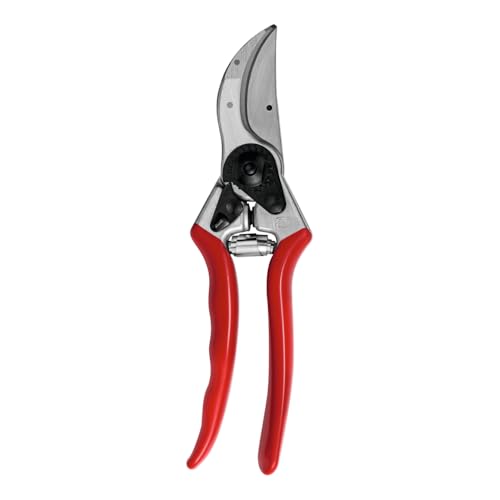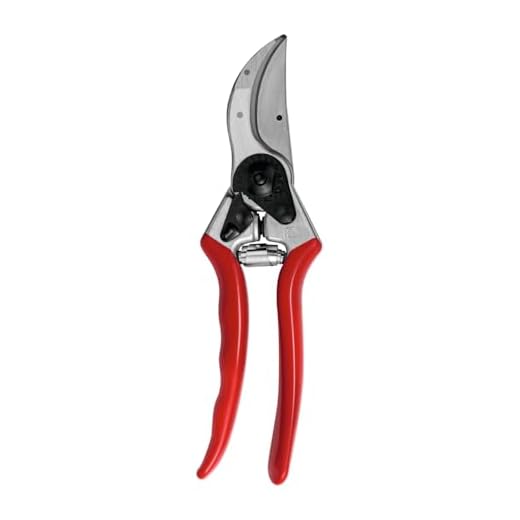




If you’re a fan of bonsai trees and looking for a unique addition to your collection, why not consider growing a bonsai pomegranate tree from seed? Pomegranate trees are not only known for their delicious fruit, but they also make stunning bonsai specimens. Cultivating a bonsai pomegranate tree from seed can be a rewarding and fulfilling experience that allows you to witness the entire life cycle of this extraordinary plant.
Gathering seeds: The first step in growing a bonsai pomegranate tree is to gather seeds from a ripe pomegranate. Select a healthy fruit and carefully extract the seeds. To do this, cut the fruit and gently remove the seeds, making sure to avoid damaging them.
Preparation: Once you have collected the seeds, soak them in water overnight to soften the outer shell and improve germination. You can also scarify the seeds lightly using sandpaper to enhance the germination process. Remember to handle the seeds with care, as they are delicate and prone to damage.
Planting: Fill a small pot with well-draining bonsai soil mix and make a small hole in the center. Place the pomegranate seed in the hole, ensuring it is covered with a thin layer of soil. Moisten the soil and cover the pot with a plastic bag or transparent film to create a humid environment for germination. Place the pot in a warm and well-lit area, away from direct sunlight.
Note: It’s important to keep the soil consistently moist but not soggy. Overwatering can lead to root rot, so be sure to water your bonsai pomegranate tree with caution.
Care and maintenance: As your bonsai pomegranate tree begins to grow, it’s crucial to provide the right care and maintenance. Water the tree regularly, ensuring the soil remains moist. Additionally, it’s recommended to fertilize the tree every two to three weeks during the growing season with a balanced bonsai fertilizer. Prune the tree regularly to maintain its desired shape and promote healthy growth.
Remember, growing a bonsai pomegranate tree from seed requires patience and dedication. It may take several years for your tree to develop the desired characteristics of a bonsai, but with proper care, you’ll be rewarded with a beautiful and unique addition to your bonsai collection.
How to Grow Bonsai Pomegranate Tree from Seed
Growing a bonsai pomegranate tree from seed can be a rewarding and fulfilling experience. With proper care and attention, you can cultivate a beautiful and unique bonsai tree that will bring beauty and tranquility to your home or garden. Here are some steps to guide you in this process:
Step 1: Obtain Pomegranate Seeds
Start by gathering fresh pomegranate seeds. You can obtain these seeds from a ripe pomegranate that you have purchased or collected. Make sure the seeds are healthy and free from any signs of damage or disease.
Step 2: Prepare the Soil
Fill a shallow container or bonsai pot with well-draining soil. You can create a mixture of equal parts of regular potting soil and perlite or sand to ensure proper drainage. Moisten the soil slightly, as excessively wet soil can lead to root rot.
Step 3: Plant the Seeds
Place the pomegranate seeds on the soil surface and gently press them into the soil. It’s important to only bury the seeds slightly, as pomegranate seeds require light to germinate successfully. You can cover the container with plastic wrap or a clear plastic bag to create a greenhouse effect and maintain humidity.
Step 4: Provide Proper Care
Keep the container in a warm location that receives indirect sunlight. Pomegranate seeds thrive in temperatures between 70°F and 90°F (21°C and 32°C). Ensure that the soil remains slightly moist, but avoid overwatering, as this can lead to fungal problems.
Step 5: Transplanting
After the seeds have germinated and seedlings have developed several leaves, you can transplant them into individual bonsai pots. Use a well-draining potting mix and gently ease the seedlings out of the container, being careful not to damage the fragile roots. Place the seedling in the center of the pot and cover the roots with soil, firming it gently around the base.
Step 6: Training and Pruning
As your bonsai pomegranate tree grows, you can begin shaping it by wiring or pruning. Bonsai wire can be used to gently guide the branches into the desired shape, while pruning shears can be utilized to trim excess growth. Regularly monitor the growth and shape of your bonsai tree, making adjustments as necessary.
Step 7: Maintaining and Enjoying Your Bonsai Tree
Continue to provide necessary care, including regular watering, adequate sunlight, and protection from extreme temperatures. Monitor the health of your bonsai tree and address any issues promptly. Enjoy the beauty and tranquility that your bonsai pomegranate tree brings to your home or garden.
By following these steps and dedicating time and effort, you can successfully grow a bonsai pomegranate tree from seed. Embrace the art of bonsai and create a miniature masterpiece that will captivate and inspire all who witness it.
Step-by-Step Guide
Gathering the Supplies
Before you begin growing a bonsai pomegranate tree from seeds, you will need to gather the necessary supplies. Here is a list of items you will need:
| Pomegranate seeds |
| Small pots or containers |
| Bonsai soil mix |
| Spray bottle |
| Plastic wrap |
| Grow lights or a sunny window |
| Watering can |
Planting the Seeds
1. Fill the small pots or containers with bonsai soil mix.
2. Moisten the soil with water using a watering can.
3. Place one or two pomegranate seeds on top of the moistened soil in each pot.
4. Cover the seeds with a thin layer of soil.
5. Mist the soil and seeds with water using a spray bottle.
6. Cover the pots with plastic wrap to create a humid environment.
7. Place the pots in a warm location with indirect sunlight.
Caring for the Seedlings
1. Keep the soil moist by misting it with water when it starts to dry out.
2. Remove the plastic wrap once the seeds begin to germinate.
3. Provide the seedlings with 12-14 hours of light per day using grow lights or a sunny window.
4. Once the seedlings have developed a few sets of leaves, you can begin fertilizing them with a balanced liquid fertilizer every two weeks.
5. Monitor the temperature and humidity levels to ensure optimal growing conditions.
6. Prune the seedlings to shape them into bonsai trees as they grow.
7. Transplant the seedlings into larger pots as they outgrow their current containers.
By following these steps, you can successfully grow a bonsai pomegranate tree from seeds and enjoy the beauty of this unique tree in your home or garden.
Tools and Materials Needed
In order to successfully grow a bonsai pomegranate tree from seed, you will need the following tools and materials:
| 1. | Small garden shovel or spoon |
| 2. | Bonsai pot or container with drainage holes |
| 3. | Bonsai soil mix or well-draining soil |
| 4. | Seeds from a pomegranate fruit |
| 5. | Plastic wrap or plastic bag for covering the pot |
| 6. | Misting bottle or spray bottle |
| 7. | Watering can or spray nozzle |
| 8. | Grow lights or a sunny window sill |
Having these tools and materials on hand will help ensure the success of your bonsai pomegranate tree growing project.
Tips and Tricks for Successful Bonsai Growing
Growing a bonsai tree requires careful attention and patience. Here are some tips and tricks to help you successfully grow and maintain your bonsai:
1. Choose the Right Species
Not all tree species are suitable for bonsai cultivation. Research and select a tree species that is known to thrive in bonsai form. Pomegranate trees are a popular choice for bonsai due to their beautiful flowers and fruits.
2. Start with Healthy Seeds or Seedlings
The health of your bonsai tree starts from the beginning. Use high-quality seeds or purchase healthy seedlings from a reputable source. This will give your tree a better chance of survival and growth.
3. Provide Proper Light and Temperature
Bonsai trees need adequate light and temperature conditions to thrive. Place your bonsai tree in a location that receives the right amount of sunlight for its species. Monitor the temperature and protect the tree from extreme heat or cold.
4. Water Regularly, but Avoid Overwatering
Proper watering is essential for bonsai tree growth. Water your bonsai tree regularly, but avoid overwatering as it can lead to root rot. Check the soil moisture level by inserting your finger into the soil. If it feels dry, it’s time to water.
5. Prune and Shape Regularly
Pruning and shaping are key steps in maintaining the desired size and shape of your bonsai tree. Use bonsai tools to carefully trim and shape the branches and foliage. Regular pruning helps create a more compact and balanced bonsai tree.
6. Use Proper Bonsai Soil
Regular potting soil is not suitable for bonsai cultivation. Use a well-draining bonsai soil mixture that allows for proper air circulation and moisture retention. This will help promote healthy root growth and prevent waterlogged conditions.
7. Fertilize Appropriately
Bonsai trees require regular fertilization to ensure proper nutrients for growth. Use a balanced bonsai fertilizer and follow the instructions for application. Avoid applying too much fertilizer, as it can burn the roots or foliage.
8. Protect from Pests and Diseases
Bonsai trees are susceptible to pests and diseases, just like regular trees. Inspect your bonsai regularly for signs of infestation or disease. Treat any issues promptly with appropriate pesticides or treatments to prevent further damage.
By following these tips and tricks, you can increase your chances of successful bonsai growing. Remember to be patient and enjoy the process of shaping and caring for your bonsai tree.






